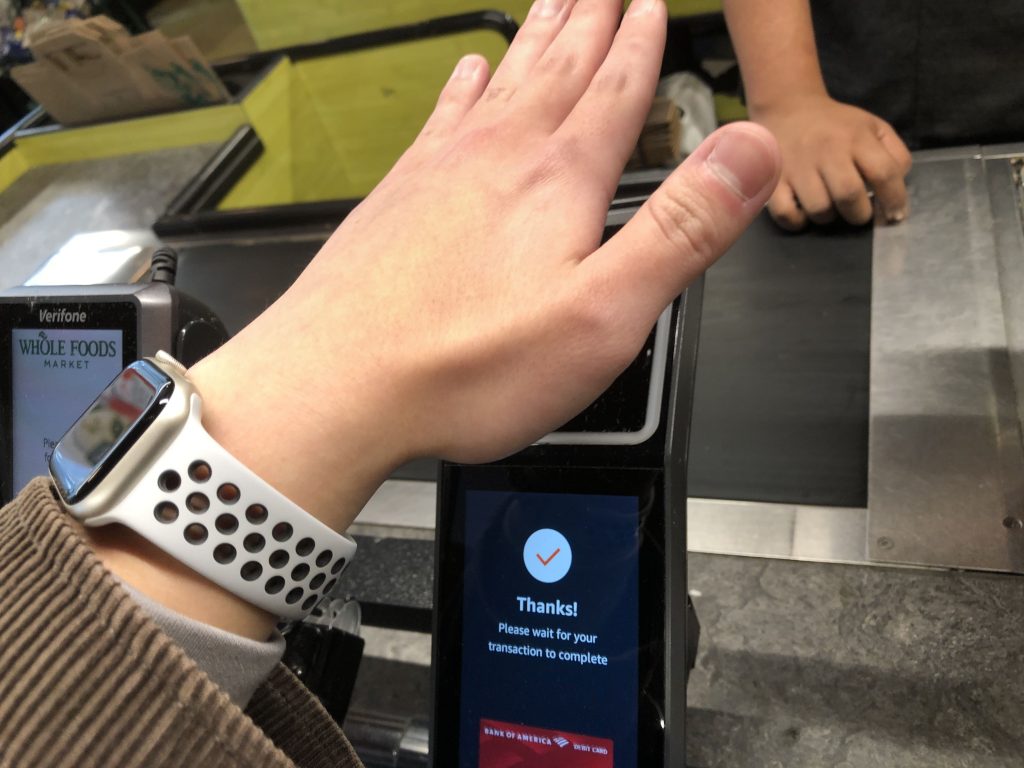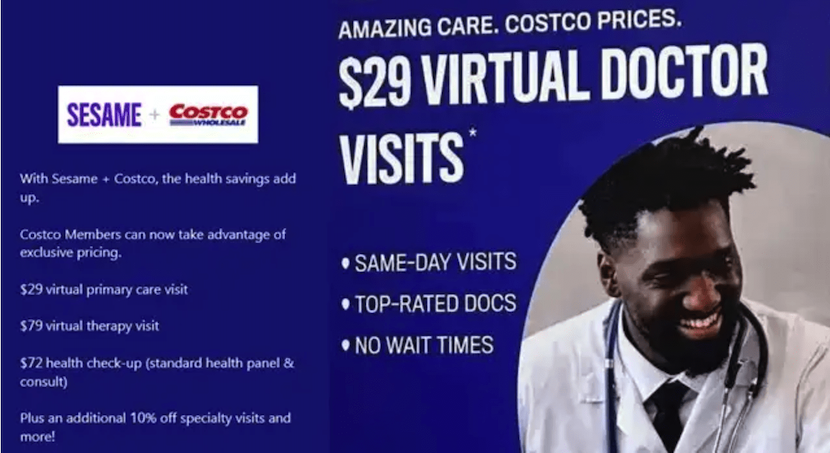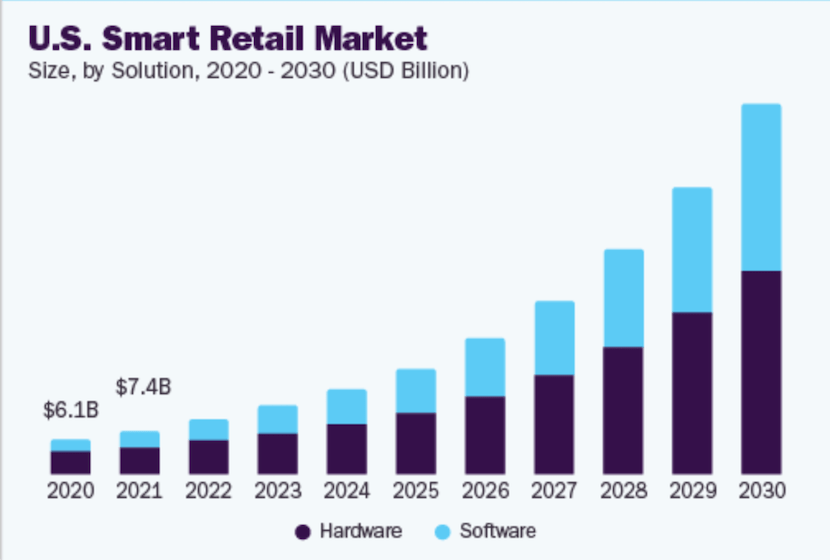
Btrax Design Company > Freshtrax > Retail Tech Inn...
Retail Tech Innovations and the Future of the Customer Experience
Retail Tech Revolutionizing the Retail Industry
In recent years, rapidly evolving digital technologies have revolutionized the retail industry. This has enabled retailers to gain a new competitive advantage by improving the customer experience and increasing operational efficiency.
This article introduces the latest retail tech deployments at major U.S. retailers and explores their effectiveness.
Retail tech refers to the use of the latest technology in the retail industry. This technology can be categorized into several different categories, but areas of particular interest include the following four categories.
1. New Payment Methods
New payment methods are being introduced in the retail industry to improve the customer payment experience. This will reduce wait times at the cash register and make payments smoother, allowing customers to enjoy a more stress-free shopping experience.
Whole Foods Market
Since its acquisition by Amazon, Whole Foods Market, a major U.S. supermarket chain, has been offering a service that successfully combines Amazon’s technology with Whole Foods Market’s various data.
Payments in the Palm of Your Hand
One of these services is an innovative payment method called “palm payment” using the Amazon One service. This system allows customers to pay by scanning their palms, significantly reducing the time spent waiting at the cash register.

Payment is completed simply by holding the palm over the machine.
Registering for Amazon One is very easy. It takes only a minute to complete the following four steps.
- Register at an Amazon One machine in a Whole Foods store.
- Insert your credit card into the machine and register.
- Register by holding both palms of your hands over the machine
- Finally, register your phone number to complete the process.
Amazon Dash Cart
Whole Foods Market also offers a convenient service that eliminates the need to wait in line at checkout by using the “Amazon Dash Cart” feature, which allows customers to pay for the products they pick up by simply scanning them into the cart.
2. Robots
Advances in robot technology have greatly streamlined inventory management in retail stores. Automated robots perform tasks such as checking assortments and updating product locations, resulting in faster and more accurate inventory management compared to traditional manual operations.
Walmart’s Cleaning Robot
Walmart, the world’s largest supermarket chain, has introduced robots to automate cleaning tasks in its stores. The robots not only clean while moving but also check the inventory status of shelves at the same time.
This allows store staff to focus more efficiently on inventory control and customer service while maintaining the cleanliness and quality of the store.
Kroger’s Inventory Control Robot
Kroger, the largest supermarket chain in the United States, uses robots to manage inventory in its stores. More than 800 robots already handle more than 20,000 online orders each day.
This system enables the company to monitor product availability in real-time and provide customers with the products they want quickly and accurately. The system is also much more efficient than conventional manual operations, increasing customer satisfaction.

Robots can assist by quickly managing ordered products.
Kroger’s Unmanned Trucks
Kroger has also partnered with Gatik, a provider of self-driving vehicles, to automate and accelerate delivery operations using unmanned trucks on a trial basis.
In addition to in-store pickup and in-store shopping experience, Kroger aims to provide customers with a seamless experience by combining “inventory management by robot and delivery by self-driving” using new technology, thereby improving customer satisfaction and increasing repeat customers.

Unmanned trucks developed by Kroger and Gatik
Lowe’s information, security, and delivery robot
Lowe’s, a major home improvement retailer in the U.S., is using robots for three main tasks: in-store inventory control & guidance, security, and delivery. This allows customers to receive fast and accurate service and reduces the burden on store staff.
Inventory Control & Guidance Robot
Utilizing NAVii, a robot with advanced artificial intelligence and 3D mapping software, NAVii can walk around the store and tell exactly which items need to be restocked in which locations, as well as identify items that are incorrectly priced or in the wrong place.
In addition, NAVii can also function as a customer support operation, speaking directly to the customer or using the display on NAVii to ask for the location of a specific product or department and it will direct the customer to the appropriate location.
Security Robots
Lowe’s is testing an autonomous security robot to prevent theft and improve store safety.
The robots move around the perimeter, identifying potential problems and reporting concerns to the surveillance team. Although it does not have facial recognition capabilities, the robot is equipped with thermal anomaly detection and person detection sensors, which work to alert operators of undesirable intruders.
The robot is also considerate of visually impaired customers by emitting a hissing sound while moving. The robot is also equipped with a two-way communication system that allows the operator to call for help using the robot.

This robot can patrol a Lowe’s parking lot to check for suspicious people or objects.
Delivery Robots
Lowe’s has partnered with FedEx, a major U.S. transportation service provider, to try a same-day delivery service using an autonomous robot called the “SameDay Bot“.
The bot is designed to operate on sidewalks and roadsides, maintaining stability and avoiding obstacles while navigating curbs, dirt surfaces, and sharp curves, and can navigate bumps without difficulty.
In this way, measures to improve the customer experience using robot technology are progressing rapidly in the United States.

Delivery robots are built to handle incumbent weather and environmental obstacles.
3. Drone Delivery
Drone-based delivery services are revolutionizing the delivery process for retailers, providing faster and more flexible delivery options for customers. Delivery to remote and congested areas has also become easier, leading to increased customer satisfaction.
Drone Delivery at Walmart
By working closely with experts such as Wing and Zipline, who focus on speed, safety, and sustainability, Walmart has piloted drone delivery in Texas over the past two years, completing over 20,000 safe deliveries.
Drone delivery allows customers to take advantage of faster delivery options than ever before, with items being delivered in less than 30 minutes and some cases as little as 10 minutes. The fact that there is no fee to use the service is also significant.
So far, a variety of items have been ordered, including “forgotten groceries, over-the-counter cold remedies, and other urgent needs, afternoon sweets, snacks, and drinks to satisfy caffeine cravings, and fragile items such as eggs.
The results, Walmart and its partners say, “show that the demand for drone delivery is real, and we believe that 2024 will be the year of drone delivery.
Kroger’s Drone Delivery
Kroger conducted a Pilot Test of drone delivery in 2021 but has stopped offering drone delivery services as of February 2024 due to battery, technical, and limitation issues.
During the Pilot Test, the service was limited to a weight of up to 5 pounds & a delivery radius of 1 mile, but delivery was free and guaranteed to arrive within 1 hour.
The service is currently suspended, but the day of service resumption may be near as it was reported that Kroger’s drone partner, Drone Express, has raised funds and is working to resume and expand drone services to Kroger customers in 2023.

Products can be placed in special boxes for quick delivery by drone.
4. Virtual Care (Telemedicine)
Retailers also offer Virtual Care services that allow customers to receive medical consultation and diagnosis online. Customers can receive medical support from the comfort of their own homes without having to visit a store, increasing convenience in health care.
The latest retail tech in these categories is driving more and more innovation in the retail industry, improving the customer experience and operational efficiency.
Walmart’s Online Diagnostic Service
Walmart offers a telemedicine service called “Walmart Health Virtual Care” to its members. The service provides 24/7 access to qualified, licensed healthcare providers via phone or video, and aims to improve member satisfaction by increasing access to quality care.
The services cover a variety of genres, including “urgent care, men’s & women’s private health concerns, talk therapy, teen therapy, and psychiatry.”
It also offers telemedicine services for businesses, working with companies to develop & deliver telemedicine solutions that reduce healthcare costs and provide benefits to existing and prospective employees, including tele-primary care.

Virtual care can provide 24/7 access to healthcare services for individuals & businesses
Amazon Clinic
Amazon also offers the Amazon Clinic telemedicine service in the U.S., which allows customers to meet with a doctor and pick up prescriptions online 24/7.
Customers can also choose Amazon Pharmacy to have their prescriptions delivered, making it possible to perform the entire process from diagnosis to prescription pickup virtually.

A wide range of conditions can be treated, and reviews of actual patients are available.
Costco’s Telemedicine Services
Costco offers telemedicine services to its members through a partnership with Sesame, an online medical provider.
Costco is working to make healthcare more accessible by providing affordable and convenient medical services in the U.S., where high medical costs are a major problem.

Costco is able to offer great prices not only for products but also for medical services.
Why is Retail Tech Making Progress in the U.S.?
As mentioned above, retailers in the U.S. are using the latest technologies, such as robots and drones, as a matter of course. And in the U.S., customers are already seeing the innovative services described above.
Why are American retailers more advanced in retail tech than their Japanese counterparts? There are two main reasons.
1. High Labor Costs
In San Francisco, where I am currently located, the minimum wage will be $20 per hour starting April 2024.
In addition to this, as mentioned in the article below, single-tasking is common in the U.S., so it is necessary to hire many employees, and large labor costs are a major issue. Therefore, retail tech companies are promoting the latest technologies, such as robots, to reduce labor costs.
2. Reinforcement of Security
The number of shoplifting and theft with weapons has been increasing year after year in California and throughout the U.S. As a countermeasure, many stores have implemented security guards.
Many stores are employing security guards as a countermeasure, but the high cost of labor and the sheer number of crimes are not enough to prevent them.
To reduce labor costs and human casualties, the latest technologies, such as security robots, are being actively utilized.

The amount of shoplifting at retail stores in the U.S. is increasing every year.
The U.S. Retail Tech Market Is Growing Steadily!
For these reasons, the demand for the smart retail market in the U.S. retail stores is expected to grow at a CAGR of 29% to reach USD 232.36 Billion by 2030.

The retail technology market is expected to grow along with the evolution of the latest technologies.
Japan’s Retail Tech Market is also Entering a Growth Phase
In Japan, the retail tech market is also expected to grow on the back of technological innovation and changing consumer needs.
The Japanese market is projected to reach 555.3 billion yen by 2030. In Japan, in particular, this is expected to become an important market that will attract attention as a solution to future labor shortages.

The retail technology market is expected to expand in Japan with a large amount of growth expected by 2030 as shown in the above table.
Future Prospects for Retail Tech in the U.S.
As described above, demand for the introduction of retail tech is growing rapidly in the U.S. due to social issues such as theft and shoplifting, and financial issues such as labor costs.
In addition to solving retailers’ problems, the introduction of retail tech, such as drone delivery, palmtop payment, and virtual care (telemedicine), has improved the customer experience and increased customer satisfaction, killing two birds with one stone and returning many times over.
Currently, major retailers such as Walmart and Whole Foods Market in the U.S. are mainly introducing retail tech, but there is no doubt that more and more retailers outside of the major retailers will want to introduce retail tech in the future.








